专注 效率 记忆
预习 笔记 复习 做题
欢迎观看我的博客,如有问题交流,欢迎评论区留言,一定尽快回复!(大家可以去看我的专栏,是所有文章的目录)
文章字体风格:
红色文字表示:重难点★✔
蓝色文字表示:思路以及想法★✔
如果大家觉得有帮助的话,感谢大家帮忙
点赞!收藏!转发!
本博客带大家一起学习,我们不图快,只求稳扎稳打。
由于我高三是在家自学的,经验教训告诉我,学习一定要长期积累,并且复习,所以我推出此系列。
只求每天坚持40分钟,一周学5天,复习2天
也就是一周学10道题
50天后我们就可以学完76道题,相信50天后,我们一定可以有扎实的代码基础!我们每天就40分钟,和我一起坚持下去吧!
qq群:866984458
本题出自 acwing网站
这个系列是免费的
打卡即刻退回费用。
第七天【剑指Offer例题代码 系列】
- 6. 重建二叉树
- 根据前序遍历和中序遍历 得到树
- 补充题:树的遍历
- 7. 二叉树的下一个节点
- 8. 用两个栈实现队列
- 补充:copy(a,b) 把a赋值给b
- 9. 斐波那契数列
- 10. 旋转数组的最小数字
- 11. 矩阵中的路径
- 12. 机器人的运动范围
6. 重建二叉树
原题链接
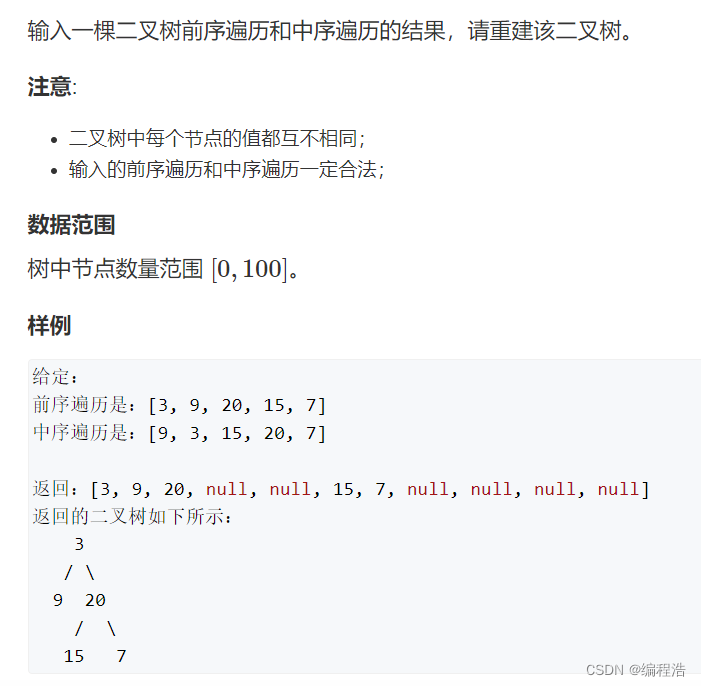
根据前序遍历和中序遍历 得到树
过程如下:
- 首先根据前序遍历找到 根节点
- 找到中序遍历中,该根节点的位置
- 中序中 位于 根节点左边的就是 左子树,右边的就是右子树
- 由于我们需要在中序遍历中找到根节点的位置,那么每次都需要遍历中序遍历,不如直接用unordered_map存储数值和位置
- 便于写代码,我们可以每次把mp[根节点] 的位置 用变量表示出来
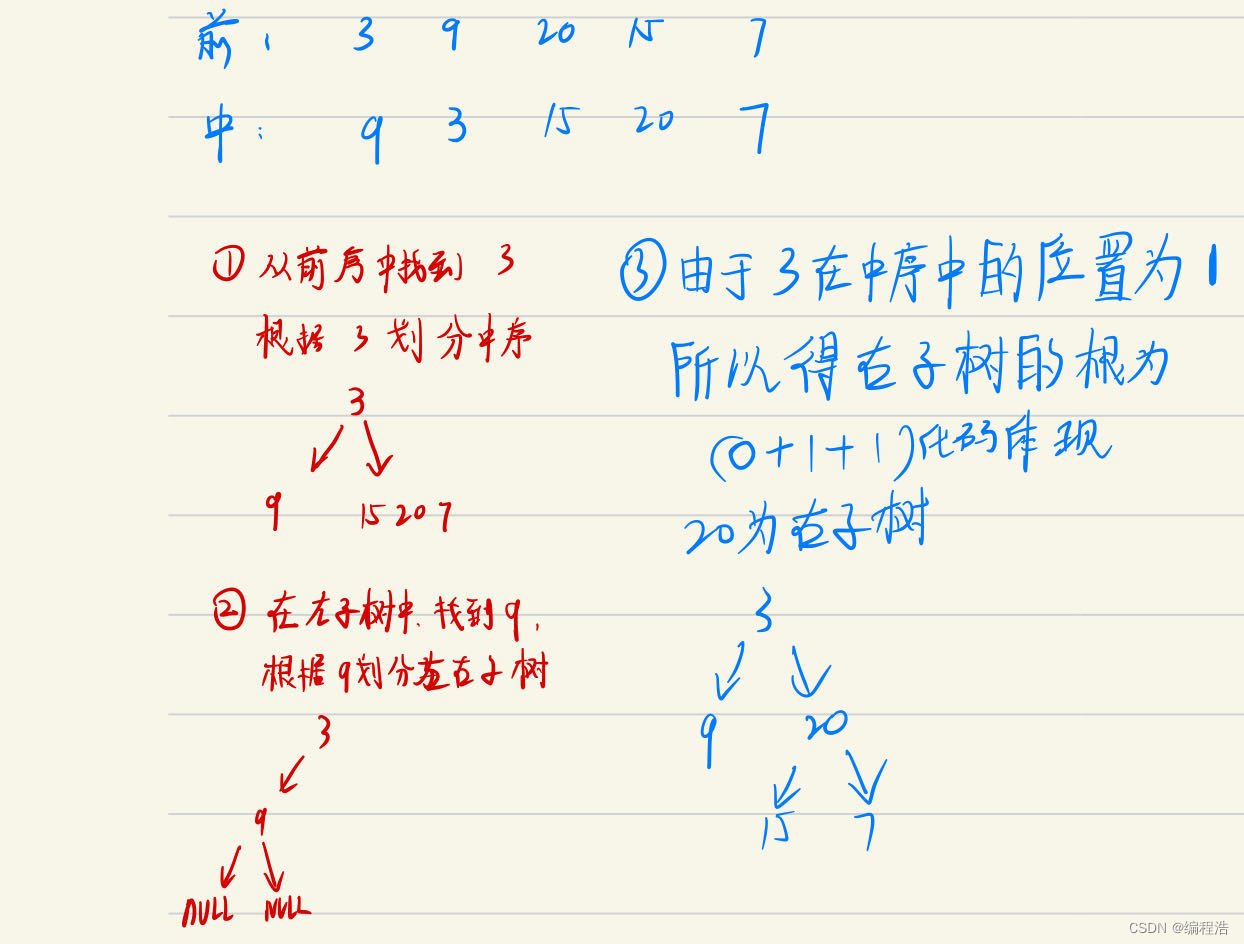
本题的代码不需要死记硬背
就需要明白
由前序确定根节点
由中序确定左右子树的个数
由左右子树的个数确定下一个根节点的位置
根据这三点去写代码即可
/**
* Definition for a binary tree node.
* struct TreeNode {
* int val;
* TreeNode *left;
* TreeNode *right;
* TreeNode(int x) : val(x), left(NULL), right(NULL) {}
* };
*/
class Solution {
public:
unordered_map<int,int> pos;
TreeNode* buildTree(vector<int>& preorder, vector<int>& inorder) {
int n = preorder.size();
for (int i = 0; i < n; i ++ )
pos[inorder[i]] = i;
return dfs(preorder, inorder, 0, n - 1, 0, n - 1);
}
TreeNode* dfs(vector<int>&pre, vector<int>&in, int pl, int pr, int il, int ir)
{
if (pl > pr) return NULL;
int k = pos[pre[pl]] - il;
TreeNode* root = new TreeNode(pre[pl]);
root->left = dfs(pre, in, pl + 1, pl + k, il, il + k - 1);
root->right = dfs(pre, in, pl + k + 1, pr, il + k + 1, ir);
return root;
}
};
补充题:树的遍历
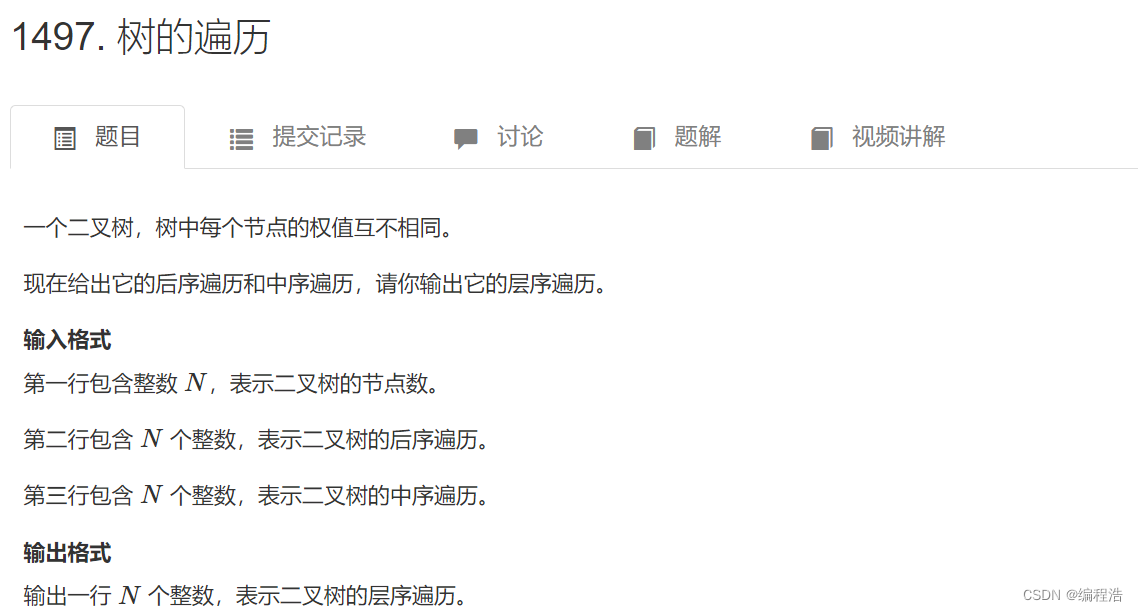

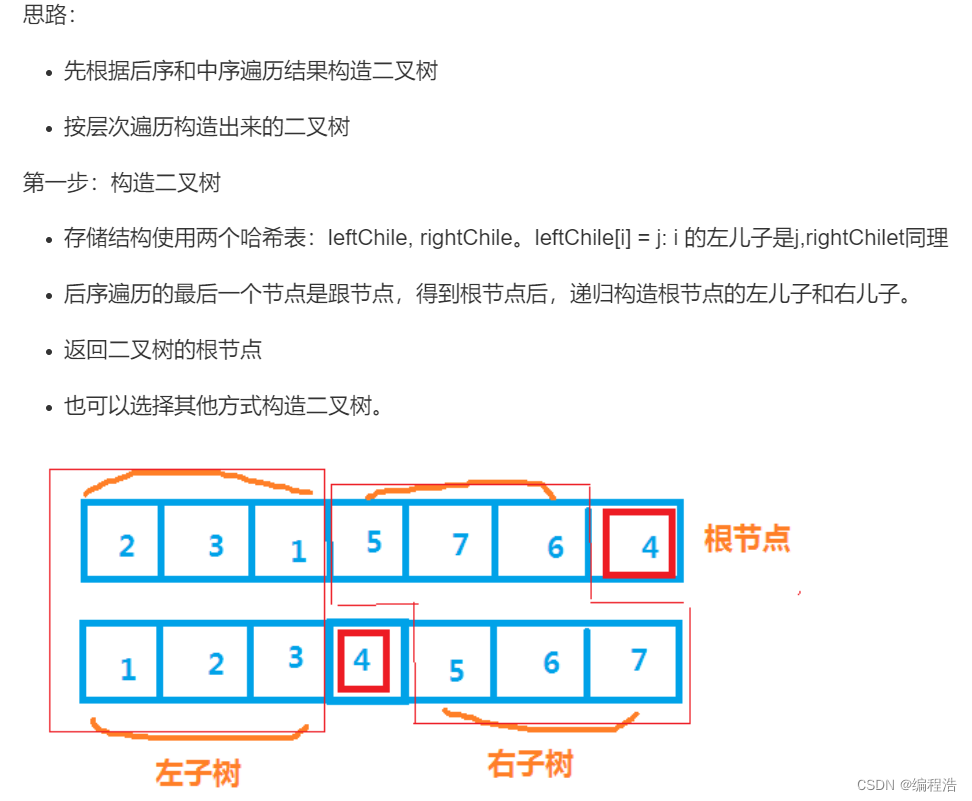

#include <iostream>
#include <string>
#include <unordered_map>
#include <vector>
#include <algorithm>
#include<memory>
using namespace std;
const int N = 35;
int n;
int inorder[N], postorder[N];
unordered_map<int, int > leftChile, rightChile;//哈希表保存树,leftChile[i] = j: i 的左儿子是j,rightChilet同理
unordered_map<int, int > h;//保存中序遍历中各节点的位置
int dfs(int postorder[], int inorder[], int l1, int r1, int l2, int r2)//构造二叉树
{
if (l1 > r1) return 0;//没有节点,返回0
int root = postorder[r1];//根结点为后续遍历的最后一个节点
int k = h[root];//找到根节点在序遍历中的位置
leftChile[root] = dfs(postorder, inorder, l1, k - 1 - l2 + l1, l2, k - 1);//构造左儿子
rightChile[root] = dfs(postorder, inorder,r1-1 - (r2 - (k +1)) , r1 -1, k + 1, r2);//构造右儿子
return root;
}
int main()
{
cin >> n;//输入
for (int i = 0; i < n; i++)
cin >> postorder[i];
for (int i = 0; i < n; i++)
{
cin >> inorder[i];
h[inorder[i]] = i;//保存中序遍历中各个节点的位置
}
int root = dfs(postorder, inorder, 0, n - 1, 0, n - 1);//构造二叉树
//数组模拟队列
int q[N], hh = 0, tt = -1;//按层次遍历
if (root)//非0 表示有节点
q[++tt] = root;
while (hh <= tt)
{
int t = q[hh++];
if (leftChile[t]) q[++tt] = leftChile[t];//非0 为节点,入队列
if (rightChile[t]) q[++tt] = rightChile[t];//非0 为节点,入队列
}
for (int i = 0; i <= tt; i++)//队列中保存的就是按层次遍历的结果
cout << q[i] << " ";
return 0;
}
7. 二叉树的下一个节点
原题链接
中序遍历:左根右
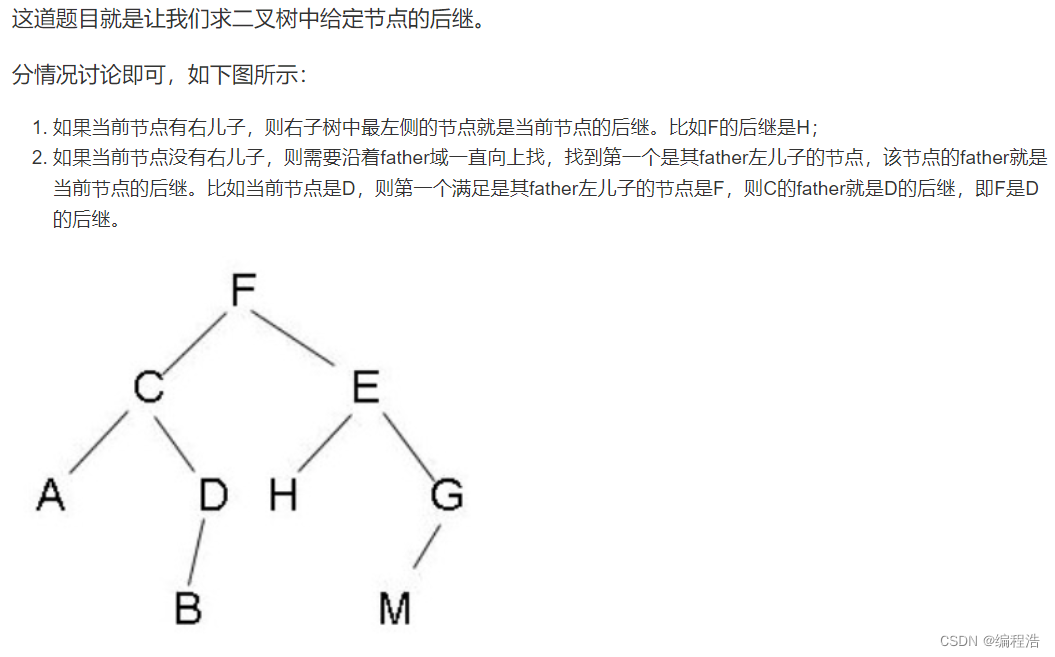
本题要分析节点的特点
- 如果节点有右子树,那么右子树的最左边的节点就是该节点后序
- 如果没有右子树,会有三种可能,在代码中有体现
/**
* Definition for a binary tree node.
* public class TreeNode {
* int val;
* TreeNode left;
* TreeNode right;
* TreeNode father;
* TreeNode(int x) { val = x; }
* }
*/
class Solution {
/**
* 模拟
* 时间复杂度:O(height),height 为二叉树的高度
* 空间复杂度:O(1)
*/
public TreeNode inorderSuccessor(TreeNode p) {
TreeNode node = p;
// Case 1. 如果该节点有右子树,那么下一个节点就是其右子树中最左边的节点
if (node.right != null) {
node = node.right;
while (node.left != null) {
node = node.left;
}
return node;
}
if(node.father != null && node.father.left == node)
return node.father;
if(node.father != null && node.father == null)
return null;
while(node.father!=null && node.father.right == node)
{
node = node.father;
}
return node.father;
}
}
8. 用两个栈实现队列
原题链接
补充:copy(a,b) 把a赋值给b


class MyQueue {
public:
/** Initialize your data structure here. */
stack<int> stk, cache;
MyQueue() {
}
/** Push element x to the back of queue. */
void push(int x) {
stk.push(x);
}
void copy(stack<int> &a, stack<int> &b) {
while (a.size()) {
b.push(a.top());
a.pop();
}
}
/** Removes the element from in front of queue and returns that element. */
int pop() {
copy(stk, cache);
int res = cache.top();
cache.pop();
copy(cache, stk);
return res;
}
/** Get the front element. */
int peek() {
copy(stk, cache);
int res = cache.top();
copy(cache, stk);
return res;
}
/** Returns whether the queue is empty. */
bool empty() {
return stk.empty();
}
};
/**
* Your MyQueue object will be instantiated and called as such:
* MyQueue obj = MyQueue();
* obj.push(x);
* int param_2 = obj.pop();
* int param_3 = obj.peek();
* bool param_4 = obj.empty();
*/
9. 斐波那契数列
原题链接
class Solution {
public int Fibonacci(int n) {
if(n==1||n==2)
return 1;
int a = 0,b = 0,c = 0;
a = 1;
b = 1;
for(int i = 3; i <= n; i++)
{
c = a + b;
a = b;
b = c;
}
return c;
}
}
10. 旋转数组的最小数字

原题链接
class Solution {
public:
int findMin(vector<int>& nums) {
if(nums.size() == 0)
return -1;
if(nums.size() == 1)
return nums[0];
for(int i = 0; i < nums.size()-1; i++)
{
if(nums[i] > nums[i+1])
{
return nums[i+1];
}
}
return nums[0];
}
};
11. 矩阵中的路径
原题链接
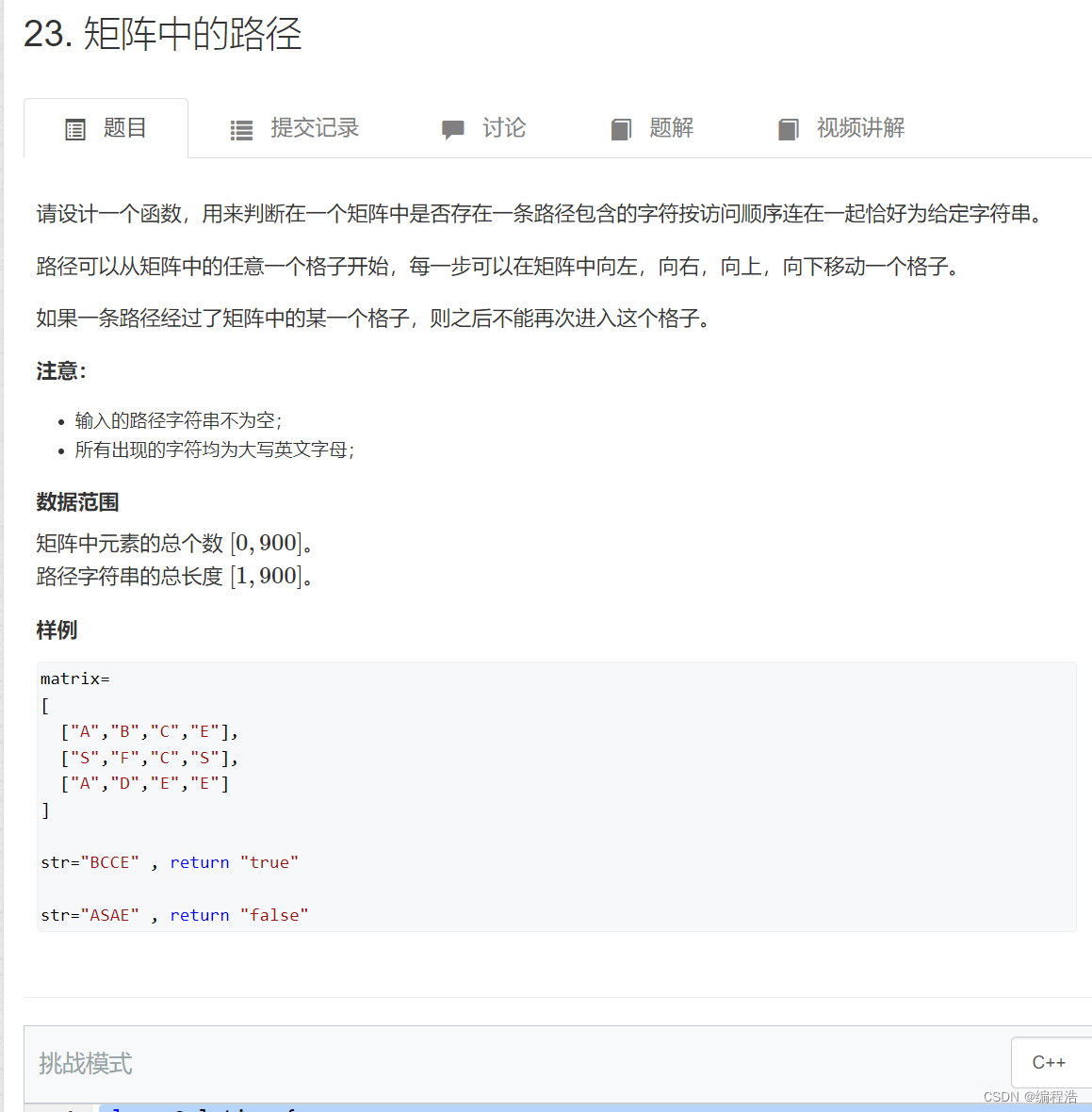
这道题就是一个经典的dfs问题(不懂dfs的可以csdn中搜索dfs算法经典例题)
本道题需要注意的是
行和纵坐标
行个数
matrix.size()
纵坐标个数
matrix[i].size()
class Solution {
public:
bool st[1000][1000];
bool hasPath(vector<vector<char>>& matrix, string &str) {
memset(st,false,sizeof st);
for(int i = 0; i < matrix.size(); i++)
{
for(int j = 0; j < matrix[i].size(); j++)
{
if(matrix[i][j] == str[0])
{
st[i][j] = true;
if(dfs(matrix,str,i,j,1)==true)
return true;
st[i][j] = false;
}
}
}
return false;
}
bool dfs(vector<vector<char>>& matrix, string &str,int x,int y,int u)
{
if(str.size()==u)
return true;
int dx[4] = {1,-1,0,0};
int dy[4] = {0,0,1,-1};
for(int i = 0; i < 4; i++)
{
int a = x + dx[i];
int b = y + dy[i];
if(a >= 0 && a < matrix.size() && b >= 0 && b < matrix[a].size() && st[a][b] == false && matrix[a][b] == str[u])
{
st[a][b] = true;
if(dfs(matrix,str,a,b,u+1)==true)
return true;
st[a][b] = false;
}
}
return false;
}
};
12. 机器人的运动范围
原题链接
这是一道经典的bfs问题
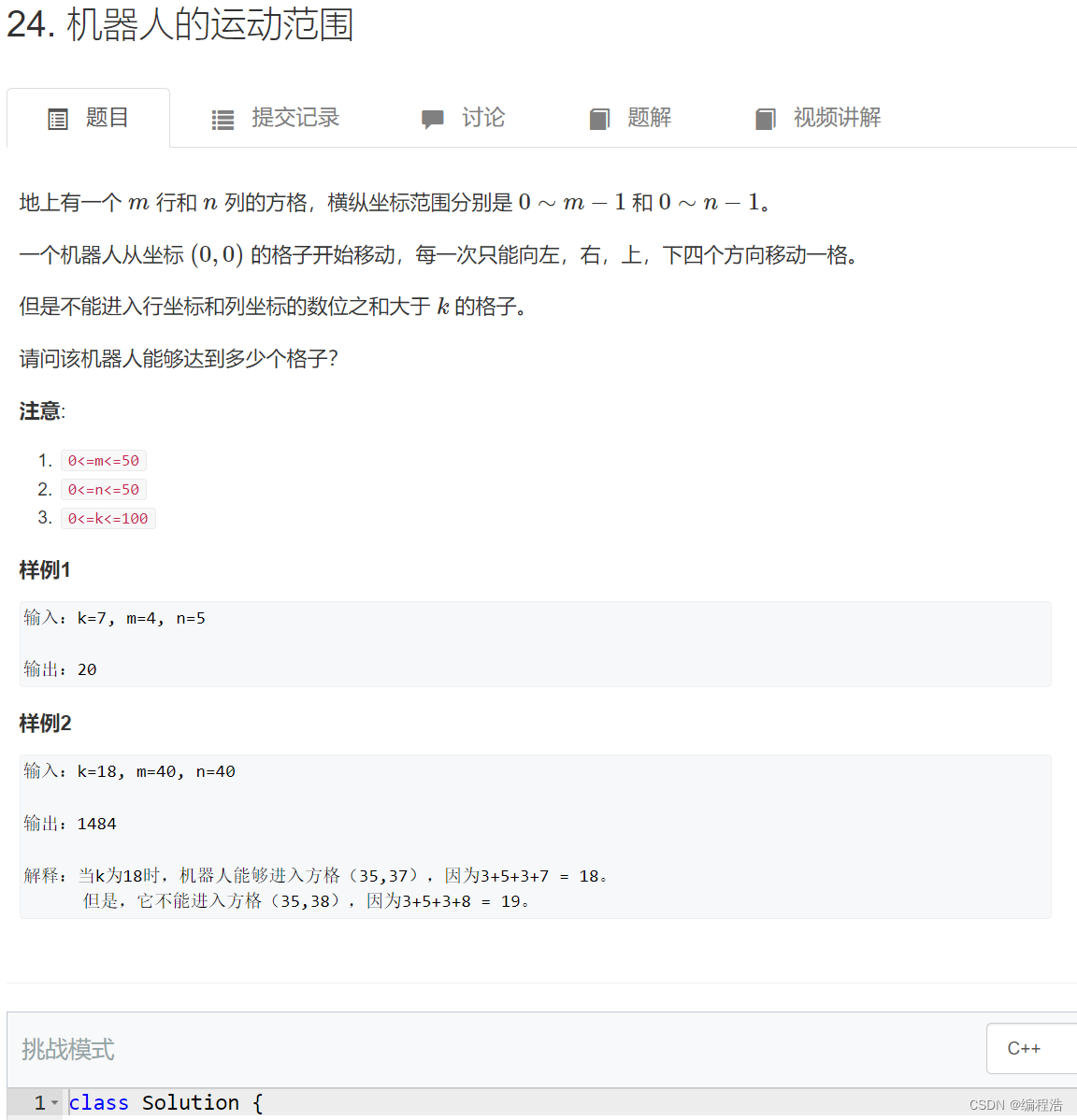
class Solution {
public:
int check(int a,int b)
{
int sum = 0;
while(a)
{
sum += a%10;
a = a/10;
}
while(b)
{
sum += b%10;
b = b/10;
}
return sum;
}
int movingCount(int threshold, int rows, int cols)
{
if(rows==0 || cols == 0)
return 0;
int cnt = 0;
bool st[110][110];
queue<pair<int,int>> q;
q.push({0,0});
st[0][0] = true;
while(q.size())
{
auto t = q.front(); q.pop();
cnt++;
int dx[4] = {1,-1,0,0};
int dy[4] = {0,0,1,-1};
for(int i = 0; i < 4; i++)
{
int a = dx[i] + t.first;
int b = dy[i] + t.second;
if(a>=0 && a<rows && b>=0 && b<cols && check(a,b) <= threshold && st[a][b] == false)
{
st[a][b] = true;
q.push({a,b});
}
}
}
return cnt;
}
};

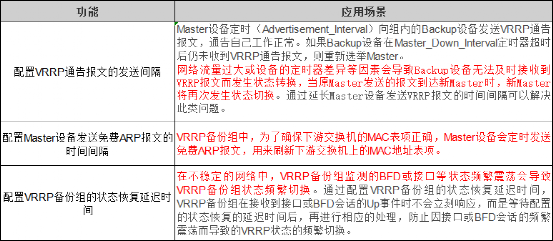










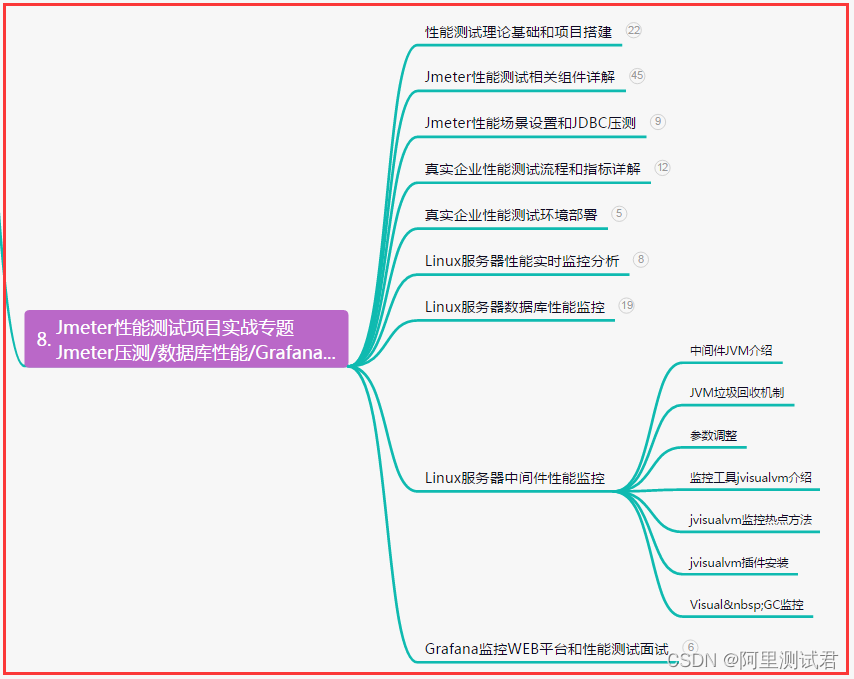



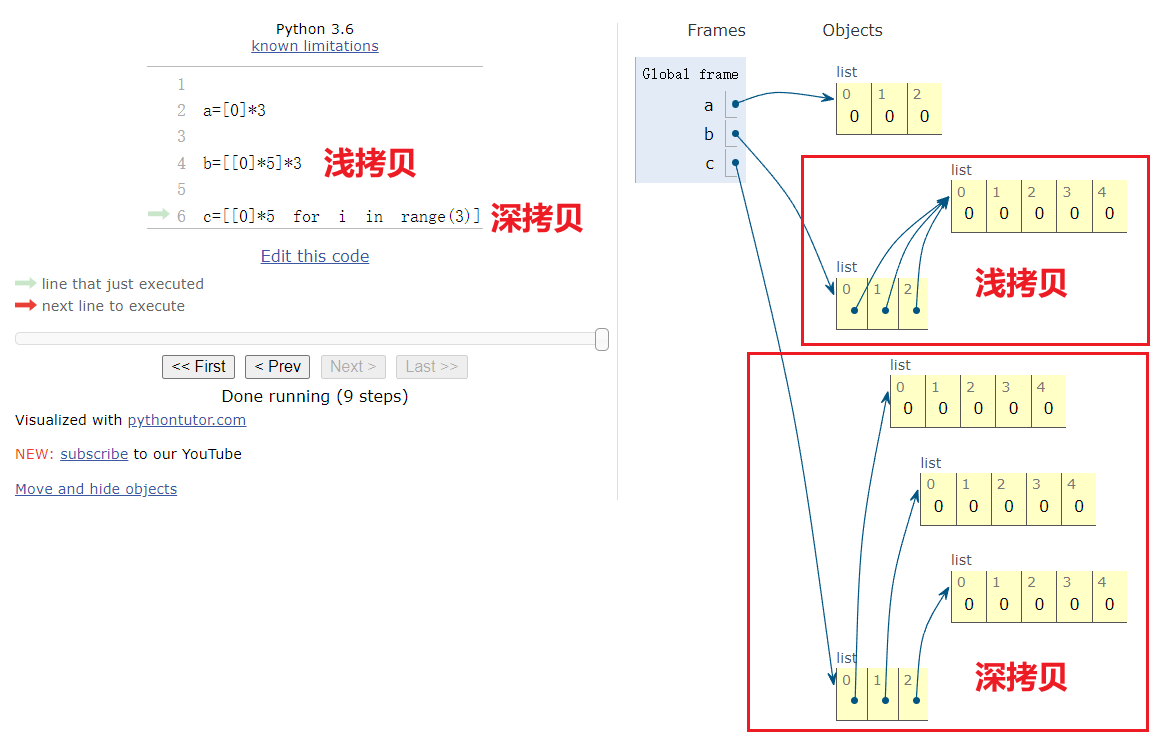
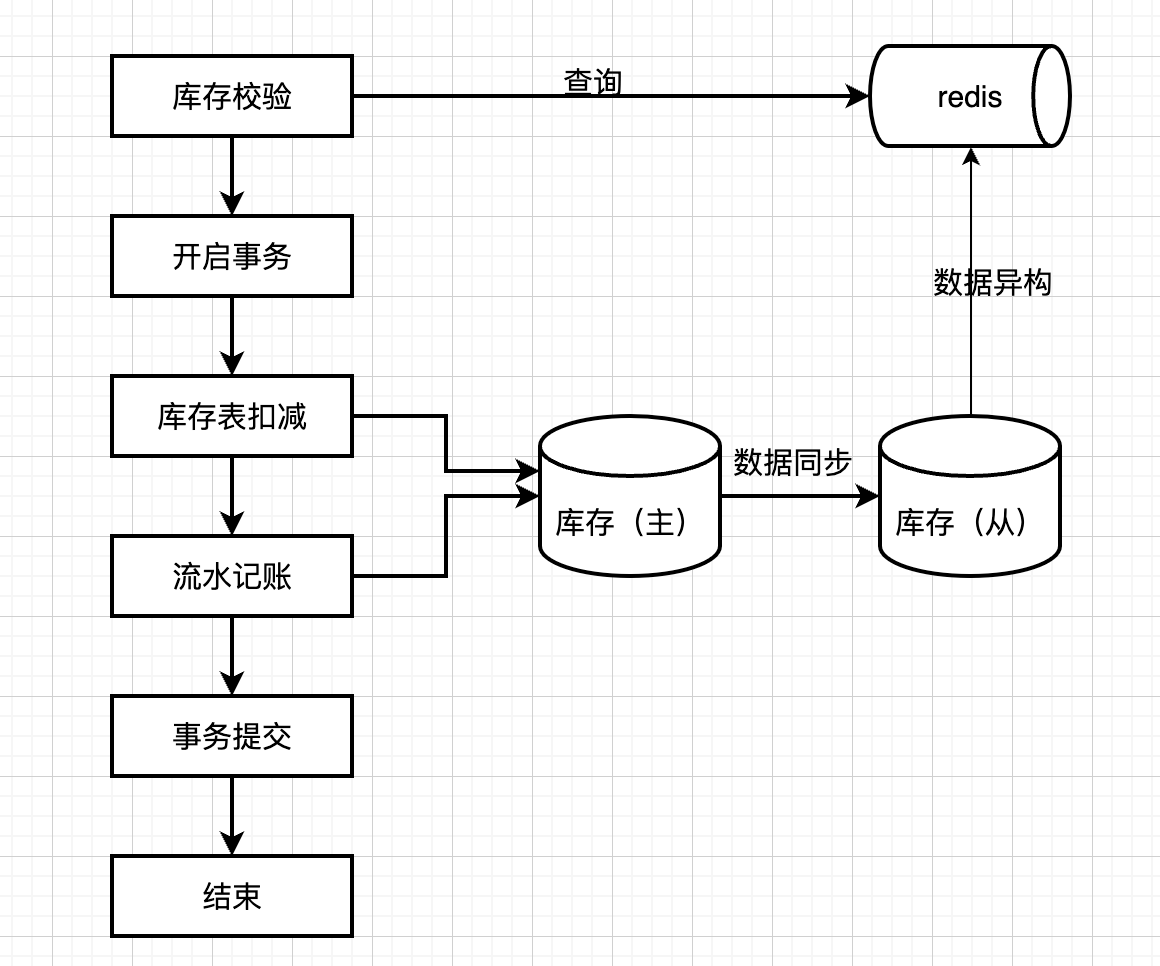
![[架构之路-216]- 架构 - 概念架构 - 模块(Module)、组件(Component)、包(Package)、对象、函数的区别](https://img-blog.csdnimg.cn/img_convert/3345e7c174187e09b1bec471db9c7726.png)
